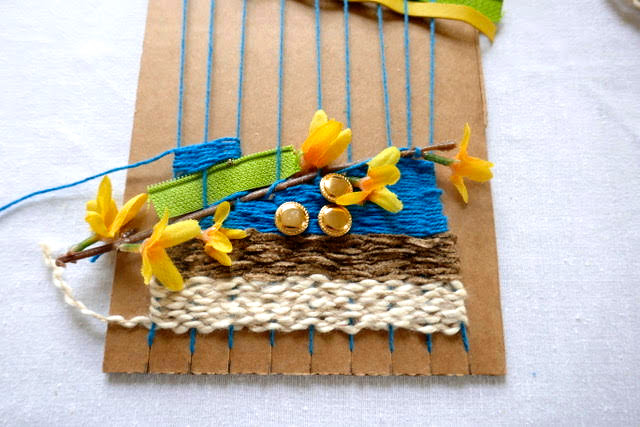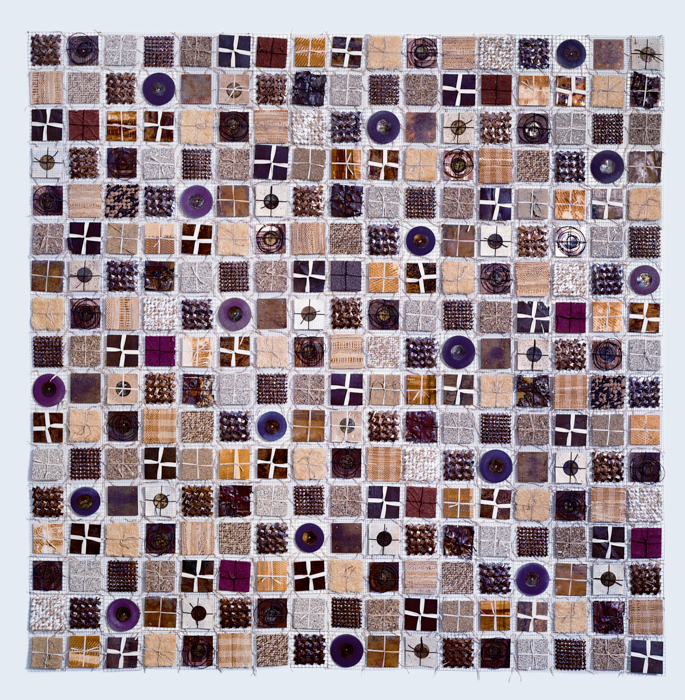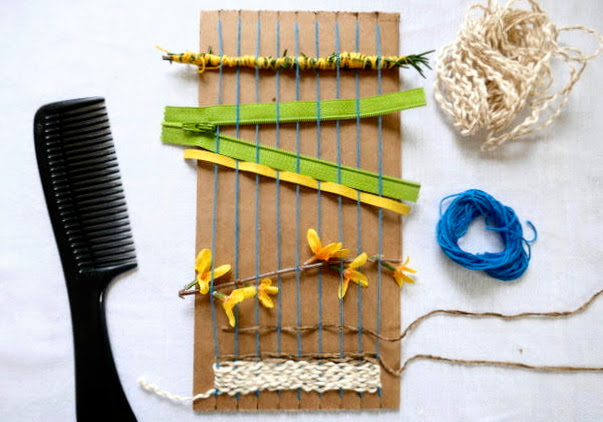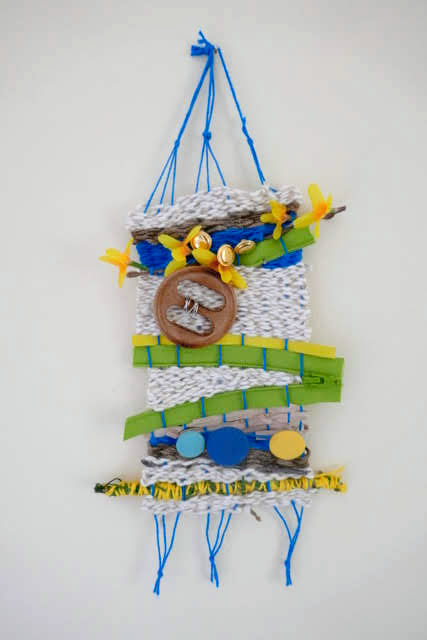 Get your weave on with items you have at home
Get your weave on with items you have at home
All you need is a piece of cardboard and a few basic materials to create your own portable loom at home. This weaving project is inspired by John Garrett’s piece, Tales Told on a Sunday Afternoon Between Los Cordovas and the Pilar Landslide, in which he incorporates found objects from a hike he took in his home state of New Mexico.

John Garrett (American, 1950– ). Tales Told on a Sunday Afternoon Between Los Cordovas and the Pilar Landslide, 1997, fiber, metal, found objects. Museum Purchase: Funds provided by Fred and Emily Gurtman. 1997.109. © 1997 John Garrett
Supplies
- Cardboard
- Ruler
- Pencil
- Scissors
- Large-eye blunt needle (try finger weaving if you don’t have a needle)
When weaving with yarn, cut pieces to 10-12 inches. This gives you a reasonable length to work with while avoiding it turning into a tangled mess. Don’t pull the yarn too tight, as this can cause your whole piece to become warped.
 When you reach the end of your working yarn, tie a knot around the final strand of warp and either use a needle to tuck it into your piece, or just trim the tail off. To begin a new row, simply cut a new piece of yarn and begin again, leaving a 6 inch tail. If you have one, use a comb or a fork to even out rows.
When you reach the end of your working yarn, tie a knot around the final strand of warp and either use a needle to tuck it into your piece, or just trim the tail off. To begin a new row, simply cut a new piece of yarn and begin again, leaving a 6 inch tail. If you have one, use a comb or a fork to even out rows.
